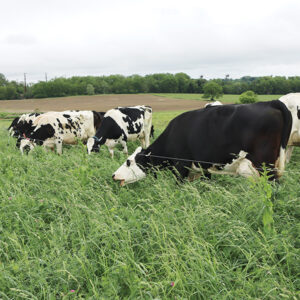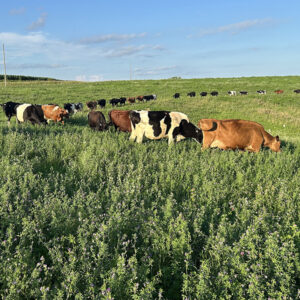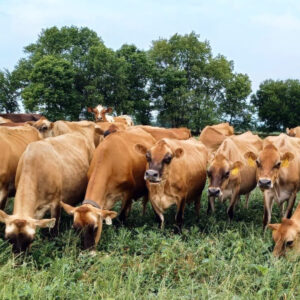Amos Stoltzfus is finding his path as a first-generation dairy grazier
By Martha Hoffman Kerestes
Kinzers, Pennsylvania — Amos Stoltzfus was new to grazing when he started in 2017. He’s made that fact an asset.
There’s no “way we’ve always done it” with a new farm and a new venture, so Amos has been experimenting with a variety of grazing and livestock management methods to see what fits on his operation. And he’s not afraid to adjust routines if a better way comes along.
“We have to be open minded to changes,” he says. “It doesn’t have to be done this way every time. Nature is never the same — weather patterns, growing seasons. Why should we do things always the same way?”
Shifts in markets
Amos and his wife Rachel milk around 40 cows for Maple Hill’s grassfed organic market on 70 certified organic acres. They’ve come a long way since starting eight years ago with 50 purchased yearling heifers.
The farm was certified organic when Rachel’s father bought it and asked the couple if they wanted to dairy on it.
There wasn’t an organic market available at the time, so when the heifers freshened, the milk went to a conventional market. But Amos didn’t use any prohibited inputs that would make the land lose its organic status.
Continue reading “Thinking outside the box with grazing”





